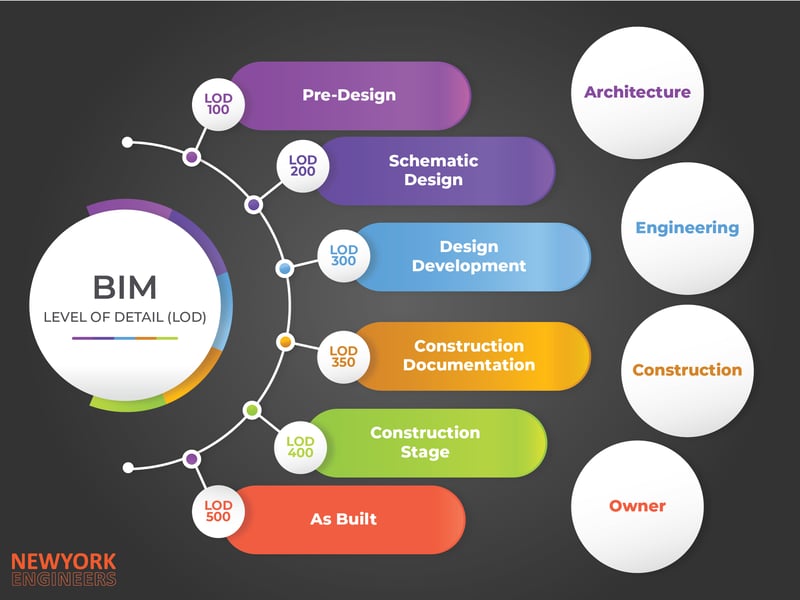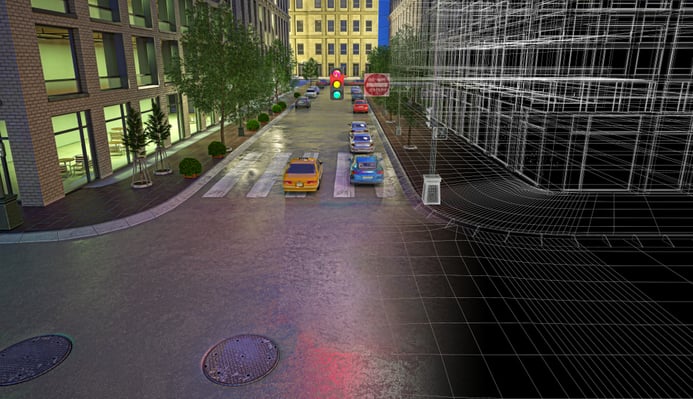BIM Level of Development: An Overview

When Building Information Modeling (BIM) is used in construction, the detail level can range from a broad geometric representation to an accurate as-built model. However, some elements of the building model are developed at a faster pace, and custom-made components need additional fabrication details.
The Level of Development (LOD) framework is used to specify how much a BIM element has been developed, and this helps with communication and coordination. For example, the structural design of a project may be almost ready, while the HVAC design is only 60% complete.
The term “Level of Detail” is also used, but it can be misleading. For instance, a model with a high level of visual detail but no technical specifications is still preliminary. “Level of Development” is preferred, since it gets associated with both visual and non-visual information.
Optimize your construction project design with Building Information Modeling.
The Six Levels of Development in BIM
The American Institute of Architects (AIA) defines six levels of development, which are presented in the diagram below. Each level corresponds with a different stage of the design and construction process:

As previously mentioned, the LOD applies for specific building systems and components, not the complete project. When design teams collaborate, the LOD indicates which areas of the design have already reached the construction documentation stage.
The definition of a “completed” model changes depending on who uses it and for what purposes. Construction Documentation (LOD 350) can be considered “complete” by contractors, since it provides all the necessary information for them to begin construction. For the client, however, only an As-Built model (LOD 500) represents a completed building.
As the LOD becomes higher, the level of detail and the information contained in BIM elements increase. The features of building components at each LOD stage are summarized below.
LOD 100: Pre-Design
Building elements are represented with generic placeholders that lack physical information, such as symbols. In other words, an LOD 100 element does not show features like dimensions, shapes and exact locations. General information about LOD 100 elements may be available from other components, but at this stage it is considered an approximation.
LOD 200: Schematic Design
LOD 200 elements are slightly more complex than LOD 100, using placeholders with approximate features - dimensions, shapes, locations, etc. LOD 200 elements may also have non-geometric information associated with them. Some LOD 200 elements have recognizable shapes, but others only have generic shapes that represent the volumes occupied. All information is still approximate at this level of development.
LOD 300: Design Development
LOD 300 elements are graphic representations like LOD 200, but their geometry and physical features are accurate at this stage. In other words, the information contained by LOD 300 models can be used during the construction stage.

LOD 350: Construction Documentation
LOD 350 elements contain the same information as LOD 300, but they also include interfaces with other building components, such as supports and connections. An LOD 350 model indicates how the component itself will be installed, and also how it interacts with other building systems.
LOD 400: Construction Stage
LOD 400 elements include fabrication and installation details. In other words, the details and information contained by LOD 400 elements can be used by suppliers to manufacture the components being represented.
LOD 500: As-Built
LOD 500 models are accurate representations of building elements after construction, which have been field-verified. Since LOD 500 elements represent the existing installation, facility managers can use them as reference for operation and maintenance.
Using the LOD Framework Effectively
It is important to note that the Level of Development is a communication tool, used to specify the modeling complexity of building elements. In a given project, developing the entire model up to LOD 500 is not necessary. For example, standard components and materials that are commercially available do not require fabrication details (LOD 400). A building may also have aesthetic details that are determined after construction, which may be left at a preliminary stage (LOD 100 or LOD 200). By defining the required LOD for building systems or components, developers and contractors can avoid unnecessary work.

Michael Tobias
Michael Tobias, the Founding Principal of NY Engineers, currently leads a team of 150+ MEP/FP engineers and has led over 4,000 projects in the US
Join 15,000+ Fellow Architects and Contractors
Get expert engineering tips straight to your inbox. Subscribe to the NY Engineers Blog below.

